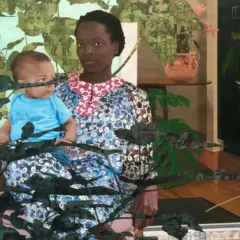MJ Moon’s Graffiti/London
MJ Moon, musician and long-time observer of street culture, lives and works in London. Asked to venture out and share his world, he reports back with a series of photos.
Against the East London backdrop, once a metropolis of yet-unknown creatives, the remaining hardcore street artists use the now gentrified walls of Shoreditch as their canvases. Boutique galleries and over-priced “vintage” clothes stores have flooded the streets, but nevertheless satisfy the mass of tourists seeking the last remnants of London’s counterculture. More of MJ’s photos, and art-inspired song clips on his Instagram/Twitter/FB : @temporalcomet
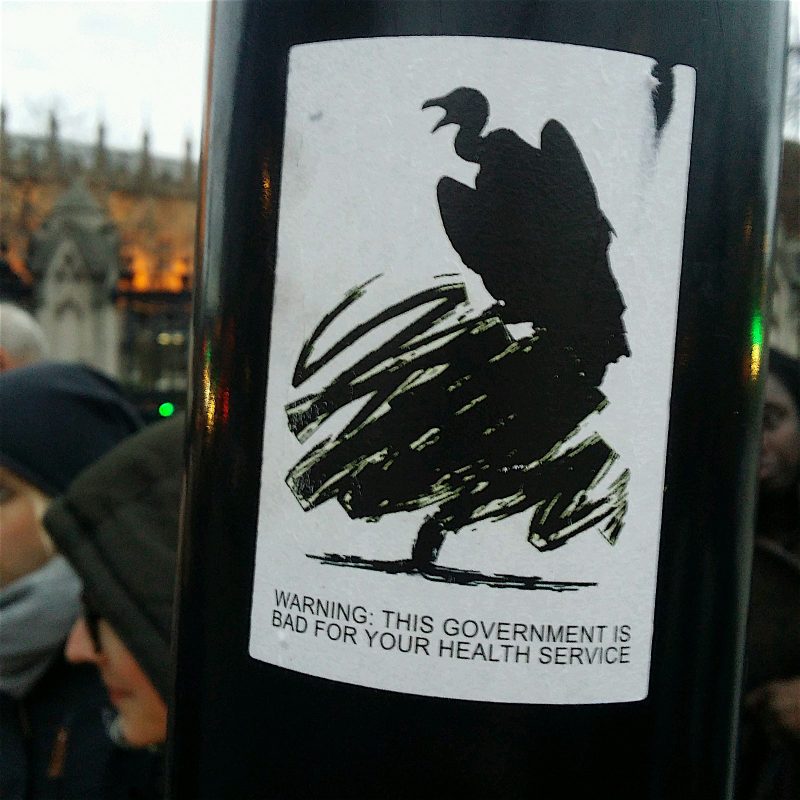
Graffiti has evolved over the years from spray-painted vulgarities and vandalism and political demands – Yankee Go Home! – to the gamut of promotional messages, some of whose messages are writ as tall as the apartment buildings they’re featured on. Artists and activists, however, have worked the visual spaces on streets and buildings to great effect using the simple sticker. Sometimes the size of a cigarette pack, at other times small poster-sized on sticky paper. Yes, the medium is still the message in the mire of the streets.
The vulture perched atop the UK’s Conservative Party’s logo of a tree (recently changed from a torch) is the state of the art of political messaging – black and white and cheap and easy to slap up anywhere. This graffiti effectively modifies the logo of the tree, adds death in the form of the vulture, and the tiny change on top of a big symbol breathes life into the protest. The text of course, is a riff on the “warnings” one finds on cigarette packages. It was placed by what MJ calls “hard socialists or militant activists.”
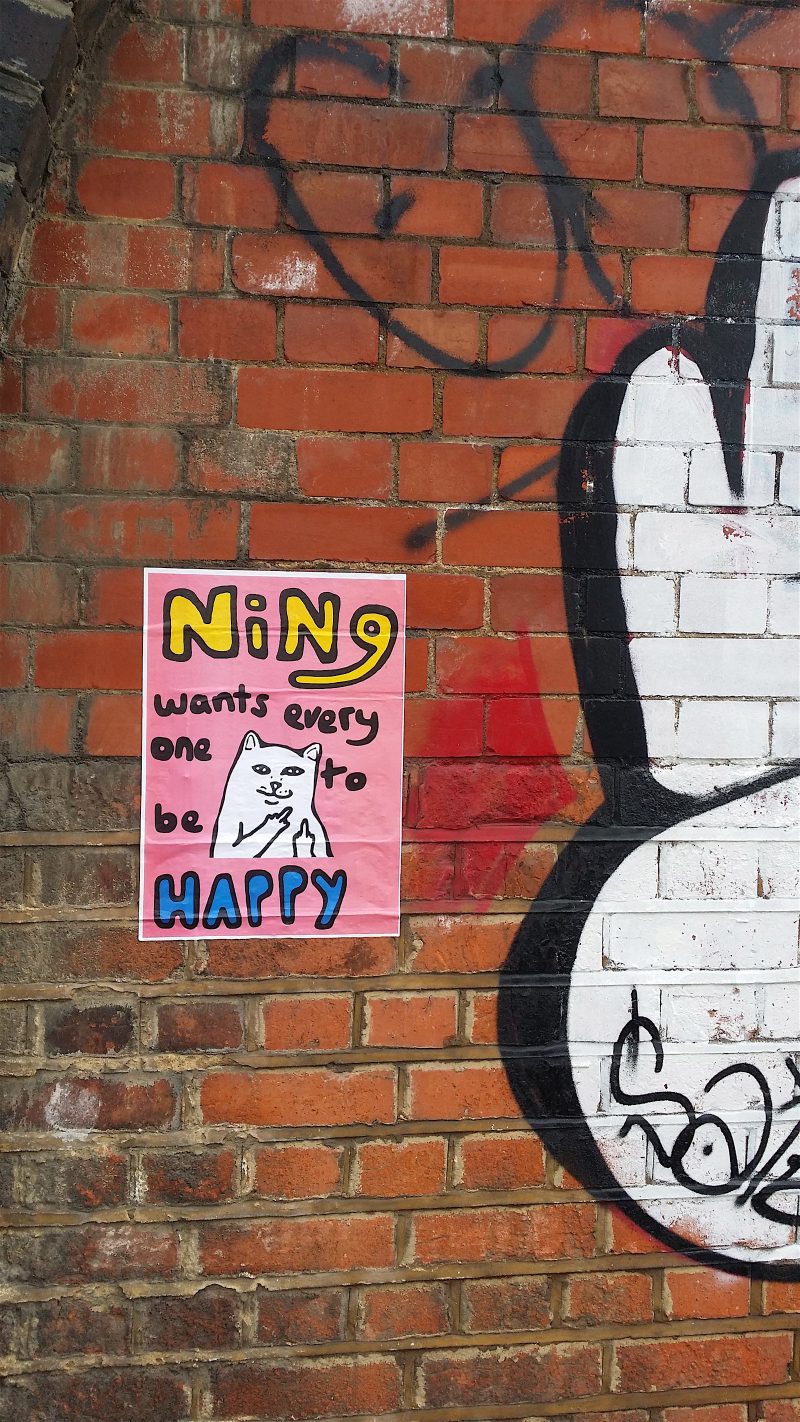
Ning is a political parody of political campaign ads. Compact, small and to the point, the Ning candidate “wants everyone to be happy,” but at the same time, Ning, a friendly looking kitty offers the finger to all comers. Pasted up on a brick wall near the busy shopping area of Bethnal Green, once a hub of manufacturing in East London, Ning is an enduring sample of British humor, lampooning the empty sloganeering of the UK’s political factions.
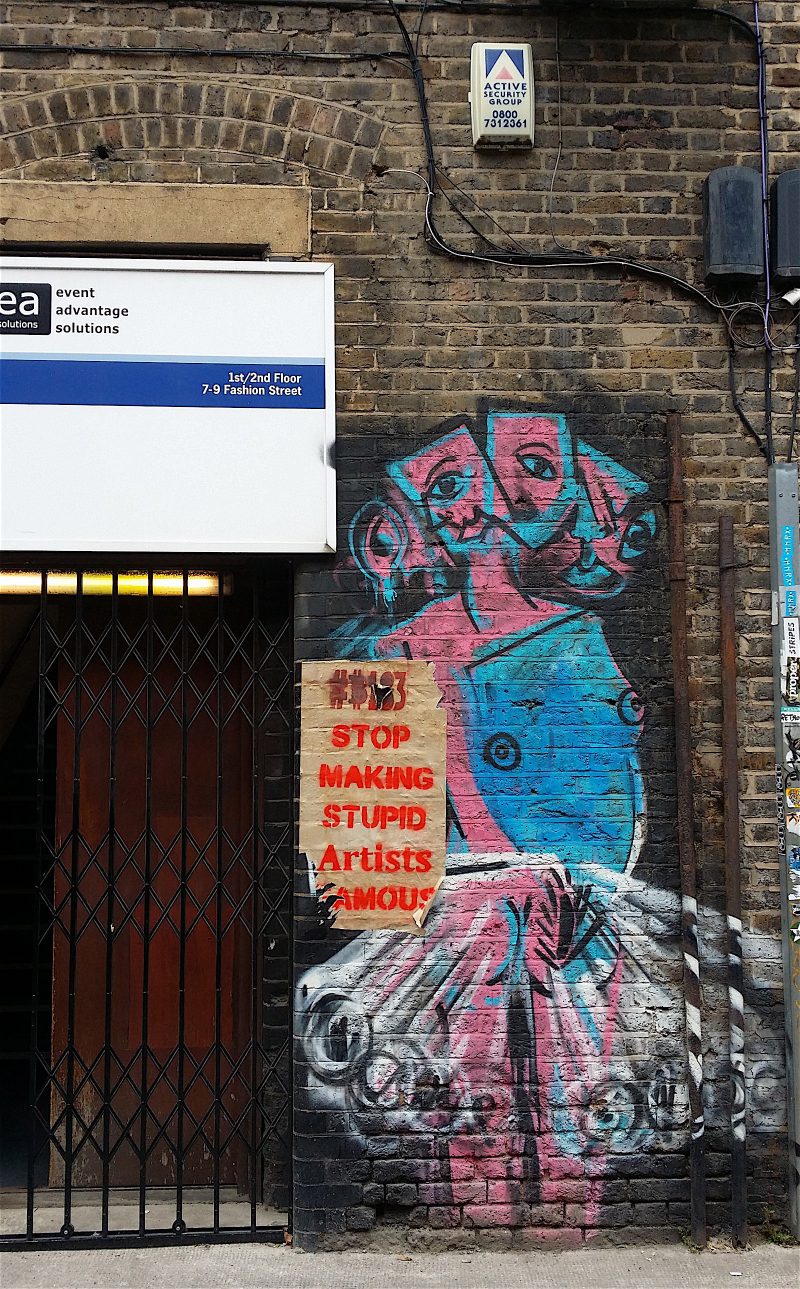
Street art has the opportunity in its anarchic context of commenting non-stop on itself, or on its neighboring art works. Messages are typically oblique yet oddly pointed. In this pile-on of art – one a cubist spray-painted work on Fashion Street, the other a stenciled text captioning demands that we “Stop Making Stupid Artists Famous,” the text works as a portable caption. Is it more about the gallery artists in the hipper districts or the art made in the street? Context shapes its message, of course, but the sentiment probably travels further than any city block where this piece is posted.
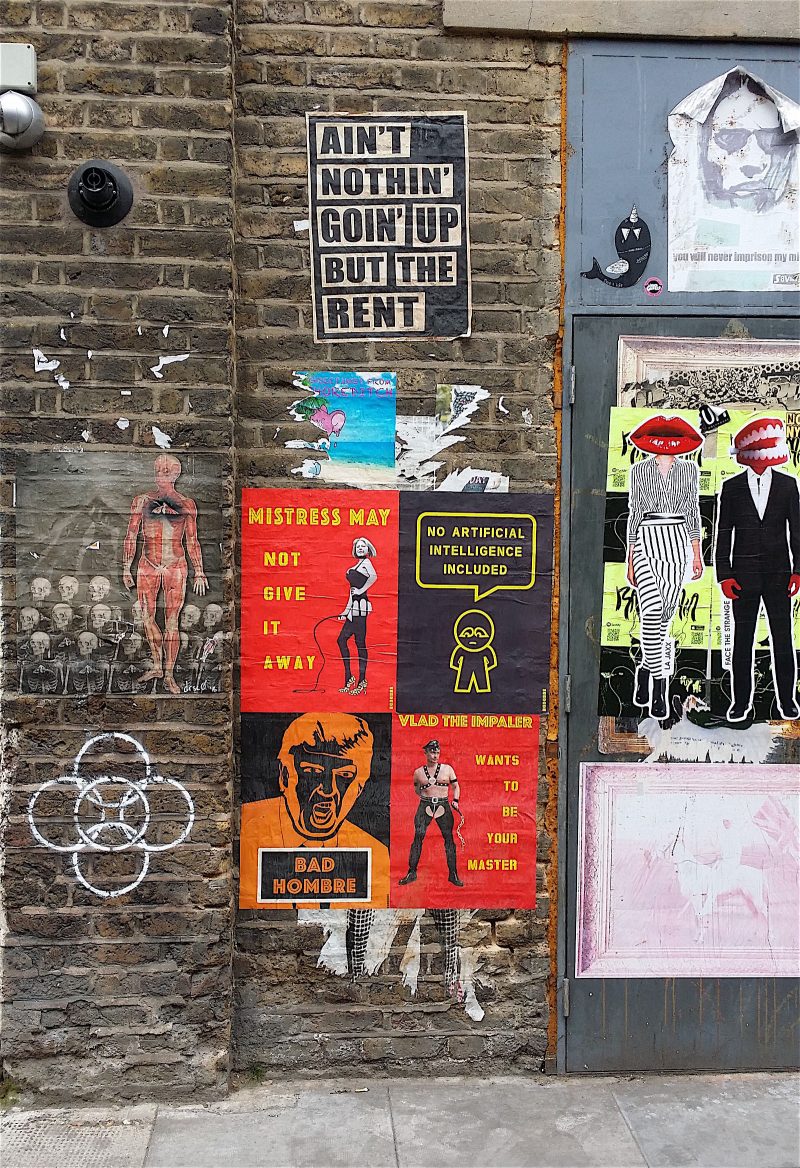
Unattended walls in large cities often end up becoming community bulletin-board rant-zones. Messages are smothered, one on top of the other and often complaining with graphic intensity about any number of issues. A poster on Brick Lane, East London blares out “AIN’T NOTHING GOING UP BUT THE RENT” and shares visual company with a bitch about UK Prime Minister “Mistress May” and “Bad Hombre” Trump, along with a work on Vladimir Putin and the useful admonition: “No Artificial Intelligence Included.”
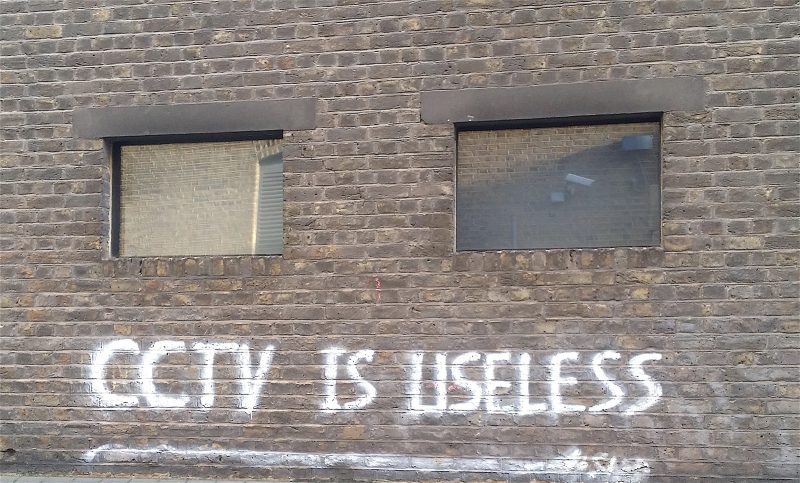
CCTV IS USELESS might be the most ironic of recent graffiti messages captured here. Closed Circuit Television is one of the biggest government industries in the UK with London perhaps the most surveilled city on the planet. The right to privacy in public in London has long been eclipsed by the demand for security. Yet all those cameras can’t prevent any number of crimes, let alone the ostensible vandalism of writing on walls, cementing the notion that CCTV is useless. If you look closely you will see a video cam anchored on the wall across the street reflected in the window. The artist must have been aware that his text was filmed in the making on CCTV. This wall is near Whitechapel, London.
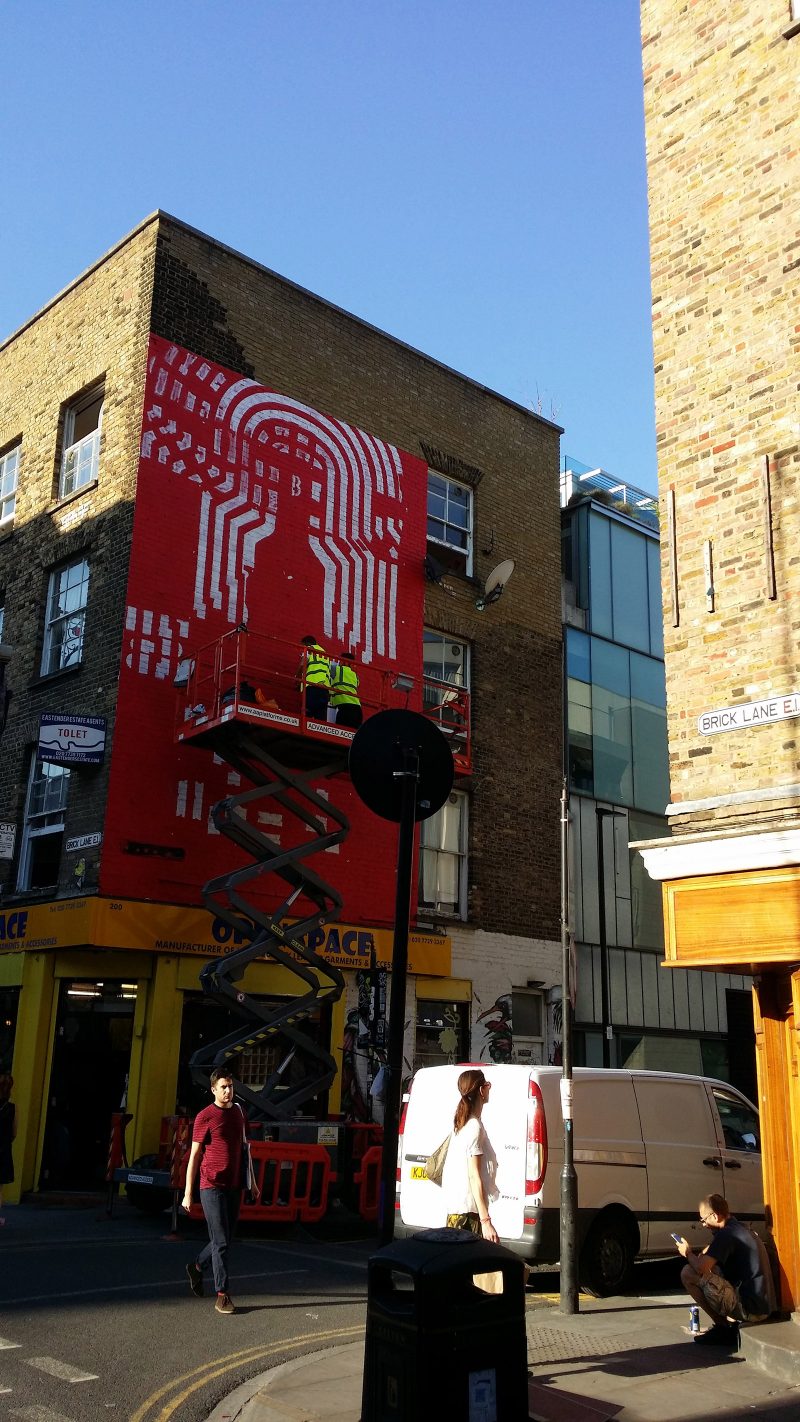
If anything, street art and graffiti have been proven effective at least in attracting attention and cellphone grabs. So the Beefeater Gin moves in with an army into the anarchy of messages along Brick Lane. Those who have money can literally get higher on the street, and of course, find a better spot with a better view and yet (maybe) get the same buzz as Mistress (Theresa) May (above) or Trump in sombrero (below). Location, location, location!
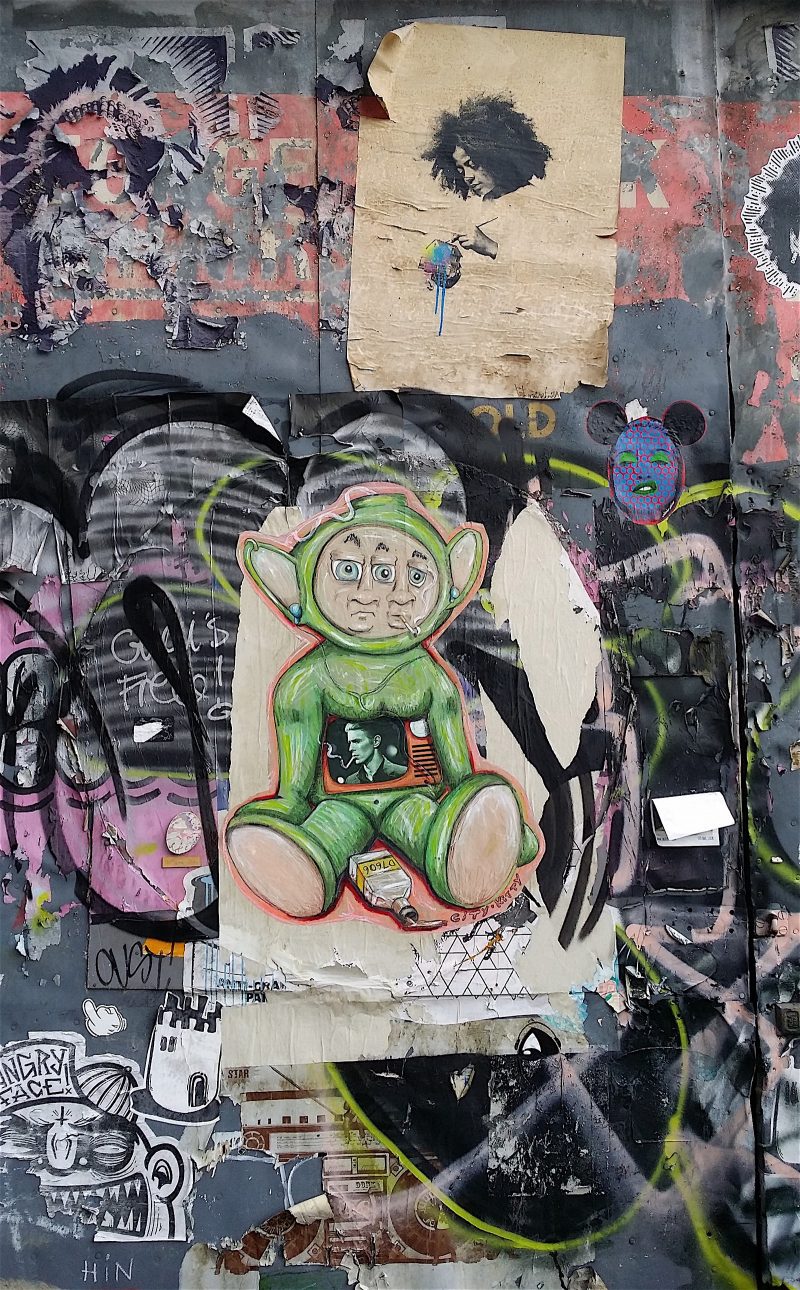
An homage to Major Tom, David Bowie and Teletubbies by three artists (at least) unwittingly collaborating while drifting in a sea of homages… Columbia Road/Flower Market.
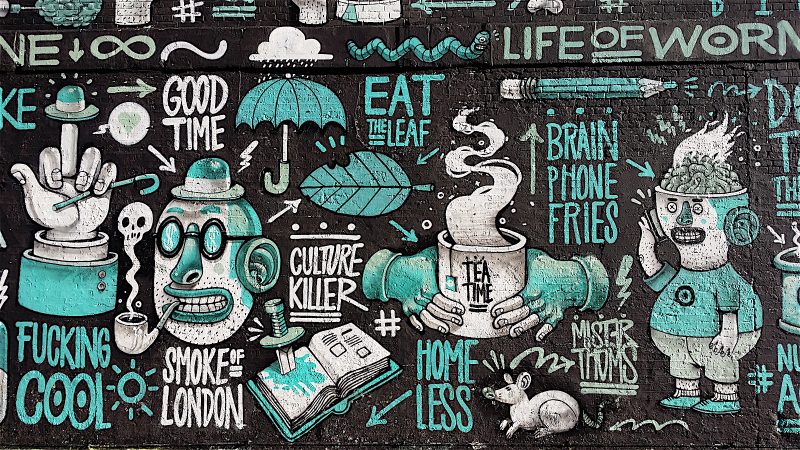
What we all love about street art is that it never goes to sleep, and over time, day and night, radiates a range of meanings. This work (only a detail) occupies an entire wall, perhaps more than 200 feet long and 10 feet high. The compression of text and image by “Mister Thoms” is stunning, and the coding of the artist’s running commentary on books, Londoners, the rain, tea, iPhones and slapdash culture is a poetic open book of dated aphorisms, jokes, comments and cartoons. He offers the finger to those with their hats and canes, but still likes them enough to share a laugh about the way things were. Mister Thoms’ mural reads like a contemporary hieroglyphic filtered through a London of the 1960s. The mural, MJ notes, has since been blacked out and another has replaced it. Location: Great Eastern Street, Shoreditch, London.
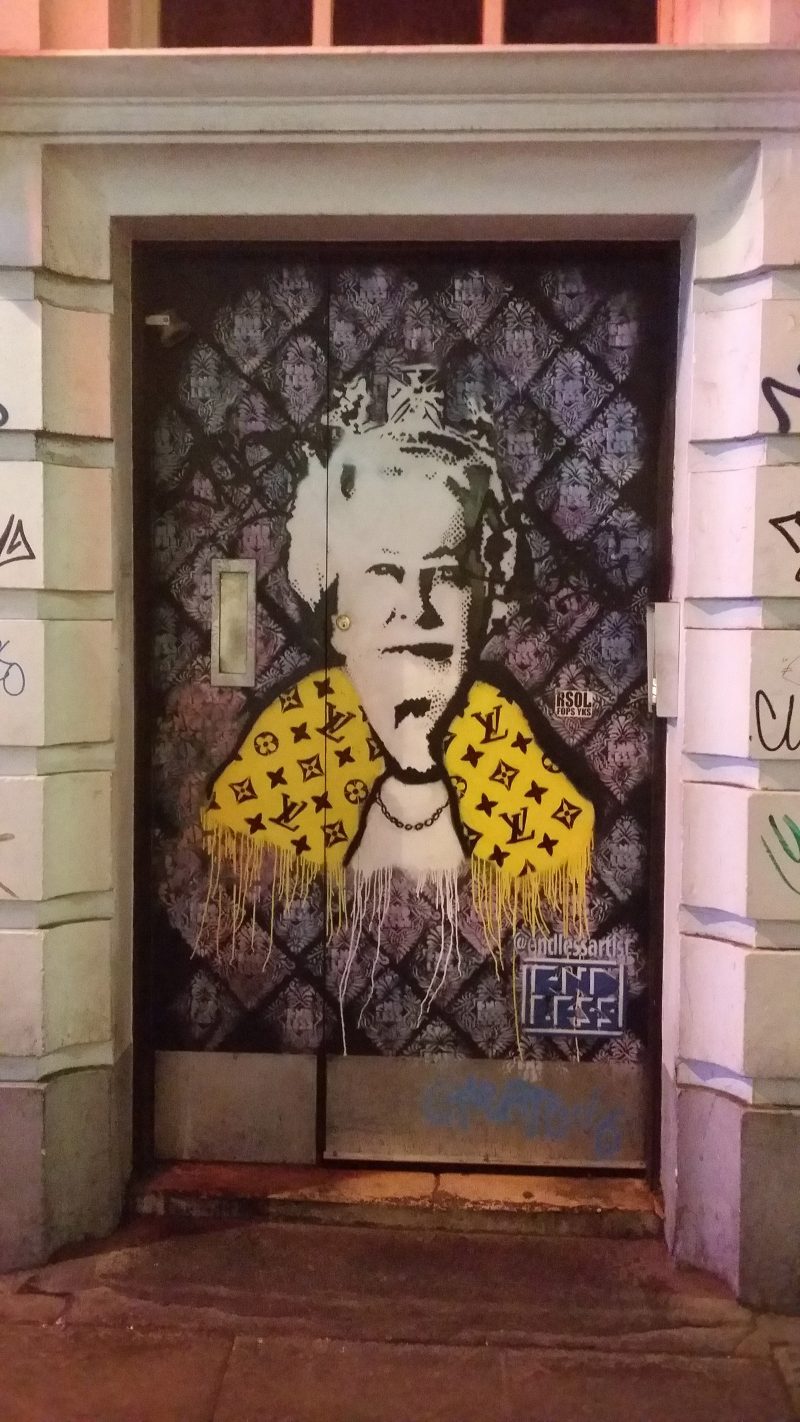
Street art in London wouldn’t be British if it didn’t feature the Queen. This piece occupies a doorway in Soho, near Leicester Square and Oxford Street. While not a terribly respectful image of The Queen her face is rendered faithfully. Though her Louis Vuitton Cape tells us that she, like her high-end fashion accessory is just so much more of what we already have: cheap copies. Note that the work is a stencil and most certainly reproduced (yet more cheap copies) across London. The artist reminds us that he’s not finished as he stencils his signature: @endlessartist.
Urban Folk Art : Mathilde Denis / New York City
Mathilde Denis is a Bordeaux, France-based artist who spent a week in New York in May just as the French elections galvanized the world.
“As I walked around New York’s SoHo, Chelsea and the East Village, I thought quite deeply about this new America and its new president, Trump,” she says. “The city’s walls still echoed the New York I’d encountered years ago. The art work and poetic and political messages were all around me to accompany my thoughts about this amazing city.”
A small sample of her photographs of New York City’s street art and graffiti follow. More of Mathilde’s photos are here.
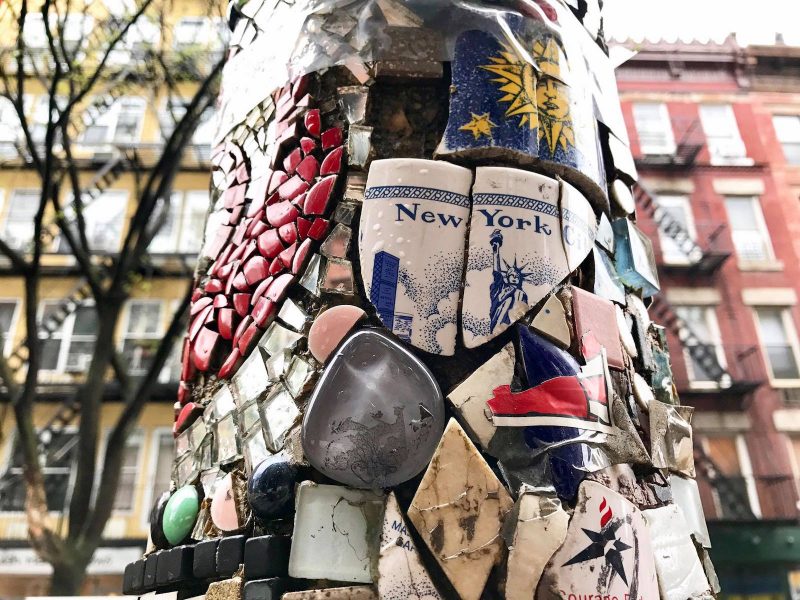
If New York is anything, it is a junkyard of broken dreams, broken hearts and lots of broken pots. Few surfaces are free of declarations of love or hurt, or the cobbled efforts of communities to decorate their environs with the souvenirs and effluvia of their lives. This telephone pole became such a home for a mosaic on an East Village street. The folk art totem announces that everything is sacred or at the very least interesting; it is a greeting and a welcome into the amalgam of the City’s many worlds.
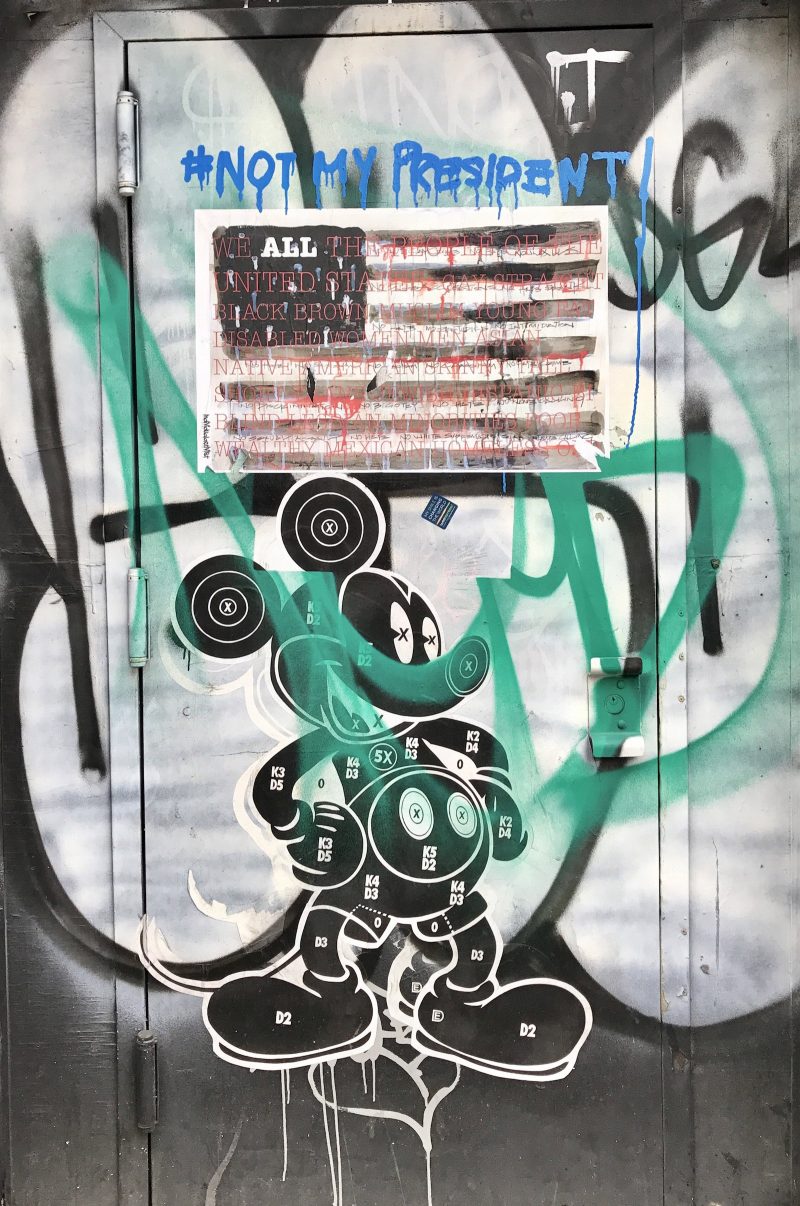
The joy of street art in New York City is that everyone is in on the game – artists, taggers, scribblers of all flavors. The messages are cocktails of dissent and angst and love and hope or at times a kind of psychosis. Here, #notmypresident is shotgun-married to an American flag (a Jasper Johns reference, too) with a straight-up plea for inclusion. These messages are then wedded to a Mickey Mouse cutout. Taggers and spray paint writers added in hearts, drips and scribbles – word salads of discord. It’s all a bit like being at a crowded party, everyone talking at once.
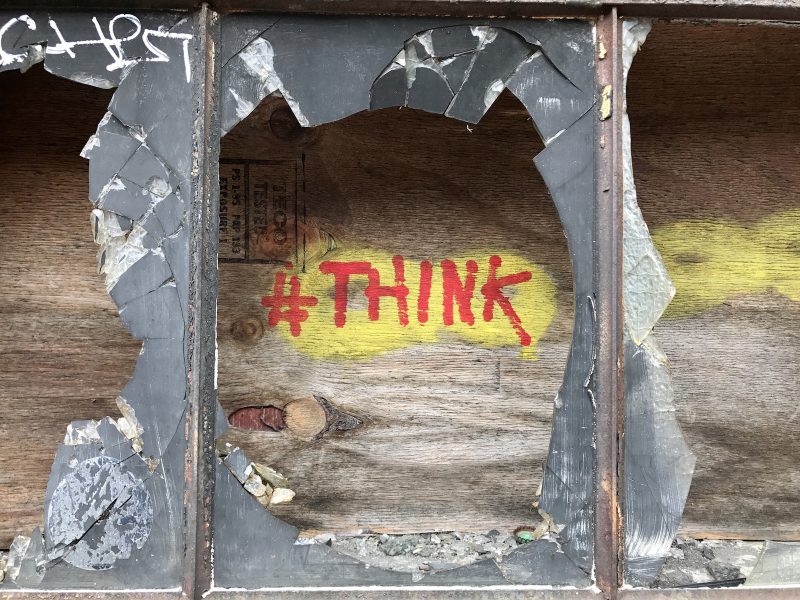
Perhaps the most obvious creature of a large city like New York is decay. Broken windows, abandoned cars, lost shoes dot the landscape like an endless outbreak of the measles. #THINK is more an internet message perfectly placed and framed: The capture is a comment pressed into an abyss: An abandoned home’s boarded up window, itself broken and painted over. But the red on yellow hashtag is a sign, a semiotic fragment oozing out of the linguistic swamp of images and text and context. At the same time it’s not just a critique of the cause, but also, ironically, a symptom.
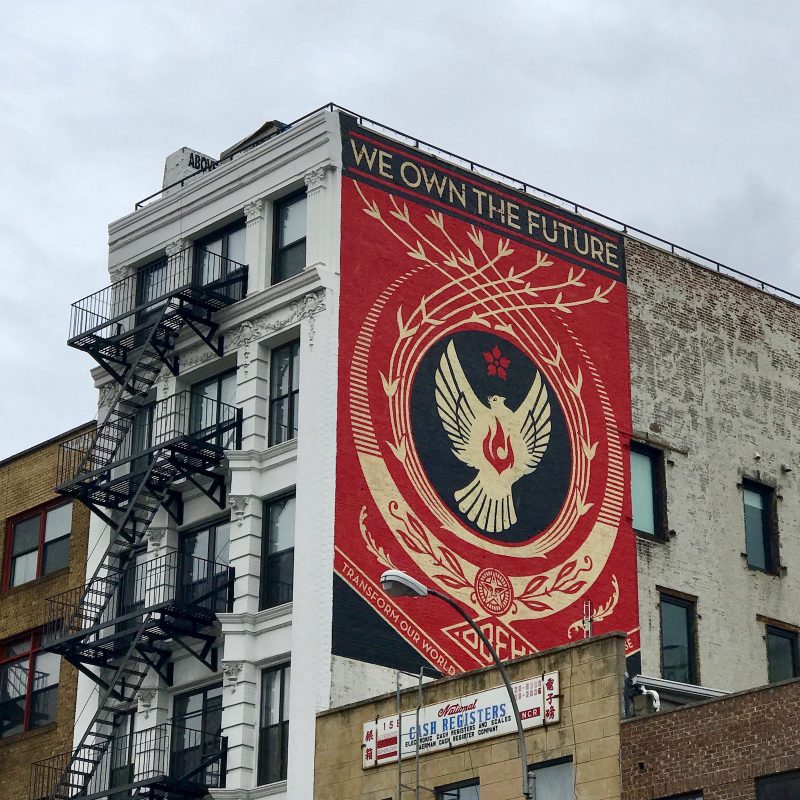
Fewer artists have ascended the street cred art world like Shepard Fairey. An heir to Jean-Michel Basquiat, contemporary of Ron English and Banksy, his Russian, graphic-inspired “OBEY” art works have long been featured as paste ups and highly sought-after collectibles. This piece, a militant billboard on the side of a SoHo apartment building offers a challenging vision of Hope. “We Own The Future” echoes an Orwellian dystopia, an optimism mired in misdirected sloganeering like Trump’s “Make America Great Again.” Fairey is pulling our leg.
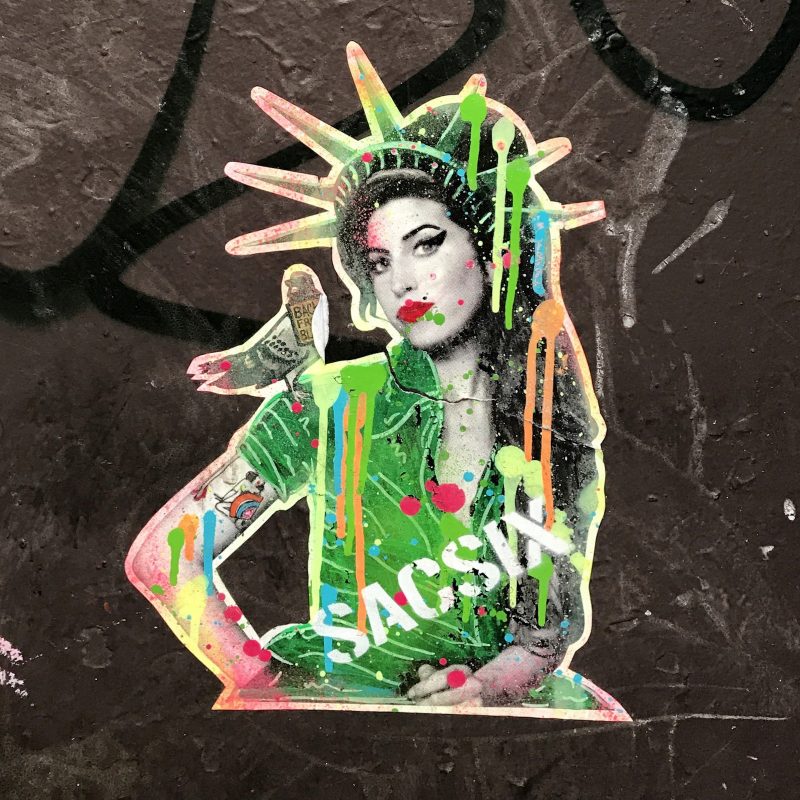
Most street art, like any publicly-placed image or text, advertises. But what? Mostly the artist him or herself in the form of their names artistically drawn or painted on walls; these are called “tags” and have some interest, or art least they did 30 years ago when street art and graffiti made from the all-over train paintings to gallery walls. Futura 2000, DAZE and Crash among others began working directly on canvases to better transport their work. Years later New York artists like Swoon produced works in their studios and then pasted them up throughout downtown New York. Those images were empowering works by an immensely imaginative woman.
With the advent of inexpensive large-format printing artists could quickly transform any image into a poster, work it up and paste it (or multiples) on walls across New York. Time and weather and curious collectors would often add to or tear away the art works. Amy Winehouse, who died in 2015, is featured here as Lady Liberty, a New York City pigeon perched on her shoulder. In this homage, Winehouse looks back at the world that once adored her, the world she left. “SACSIX” is stenciled across the work and is most certainly the author [https://www.instagram.com/sacsix/?hl=en].
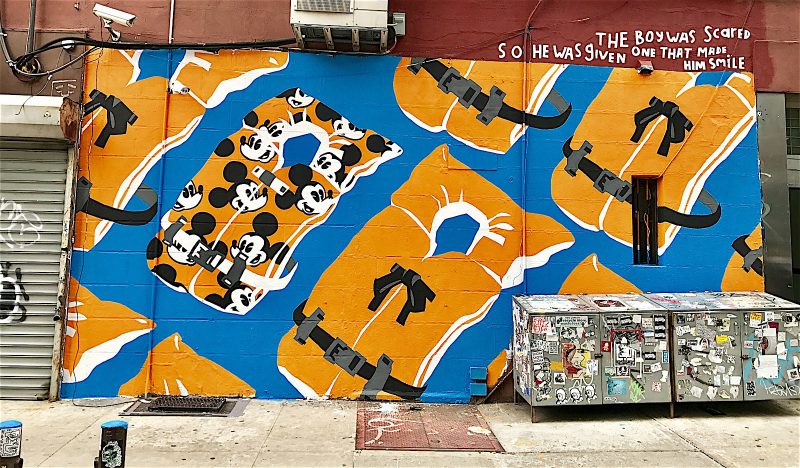
Occupying a large cinder block wall between two storefronts, this mural’s message is simple and touching and resonates between the poles of fear and safety, childhood and the knowing adult world. Our guess is that the immigration tales on the seas that often involved children escaping from desperate home situations fueled this work; its sweet nature and vibrant colors are not what they appear to be. The grid of orange life preservers floats on a sea of blue; a smaller, child-sized preserver is printed with images of a smiling Mickey Mouse. A scrawled text explains the work in a way that reminds us of children’s books, but the story was most likely culled from a newspaper account : The boy was scared so he was given a life vest that made him smile.
Unscathed by other taggers or posters, the mural is still punctuated by the presence of a large dumpster/recycling bin, itself covered with graffiti stickers. Tellingly, a CCTV camera is planted on a wall above the work along with an air conditioner and wires snaking from one electrical node to another. No work of street art is free of its context and immediate environment. Everything in the street, at least, is connected.
###




